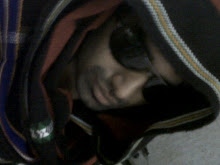 The Pyramid at Chichen Itza; Mexico
The Pyramid at Chichen Itza; MexicoChichen Itza once served as the political and economic center of Mayan civilization. The city housed masterpieces like the Temple of Chac Mool, the Hall of the Thousand Pillars, the Playing Field of the Prisoners and the pyramid of Kukulkan, which was the last Mayan temple.
Christ Redeemer; Brazil

The 124-foot statue of Jesus stands atop the Corcovado Mountain overlooking Rio de Janeiro. Built in 1931, it took five years to construct and symbolizes the warmth and welcoming spirit of the Brazilian people.
Colosseum; Rome

Almost every sports stadium today is created based on the design of the Colosseum, built between 70-82 A.D. Located in the center of Rome, the amphitheater could seat up to 50,000 spectators who watched public spectacles like the infamous gladiator fights.
Great Wall; China

The largest man—made monument ever built at about 4,000 miles in length, the wall was originally built to help create a united defense system and prevent invading Mongol tribes out of China. Construction began around the 8th century B.C. and efforts to revive it took place from 1368 — 1644 A.D.
Machu Picchu; Peru

Machu Picchu, which means "old settlement," is located halfway up the Andes Plateau—in the Amazon jungle and above the Urubamba River. Originally a 15th century Incan settlement, the magnificent city was "lost" for three centuries, then rediscovered in 1911.
Petra; Jordan

Petra, located on the edge of the Arabian desert, was home to Aretas IV, king of the Nabataeans, who were masters of water technology. The facade of a 138 ft.—high Hellenistic temple on the El-Deir Monastery—an example of traditional Middle Eastern culture—sits within the Palace Tombs of Petra.


No comments:
Post a Comment